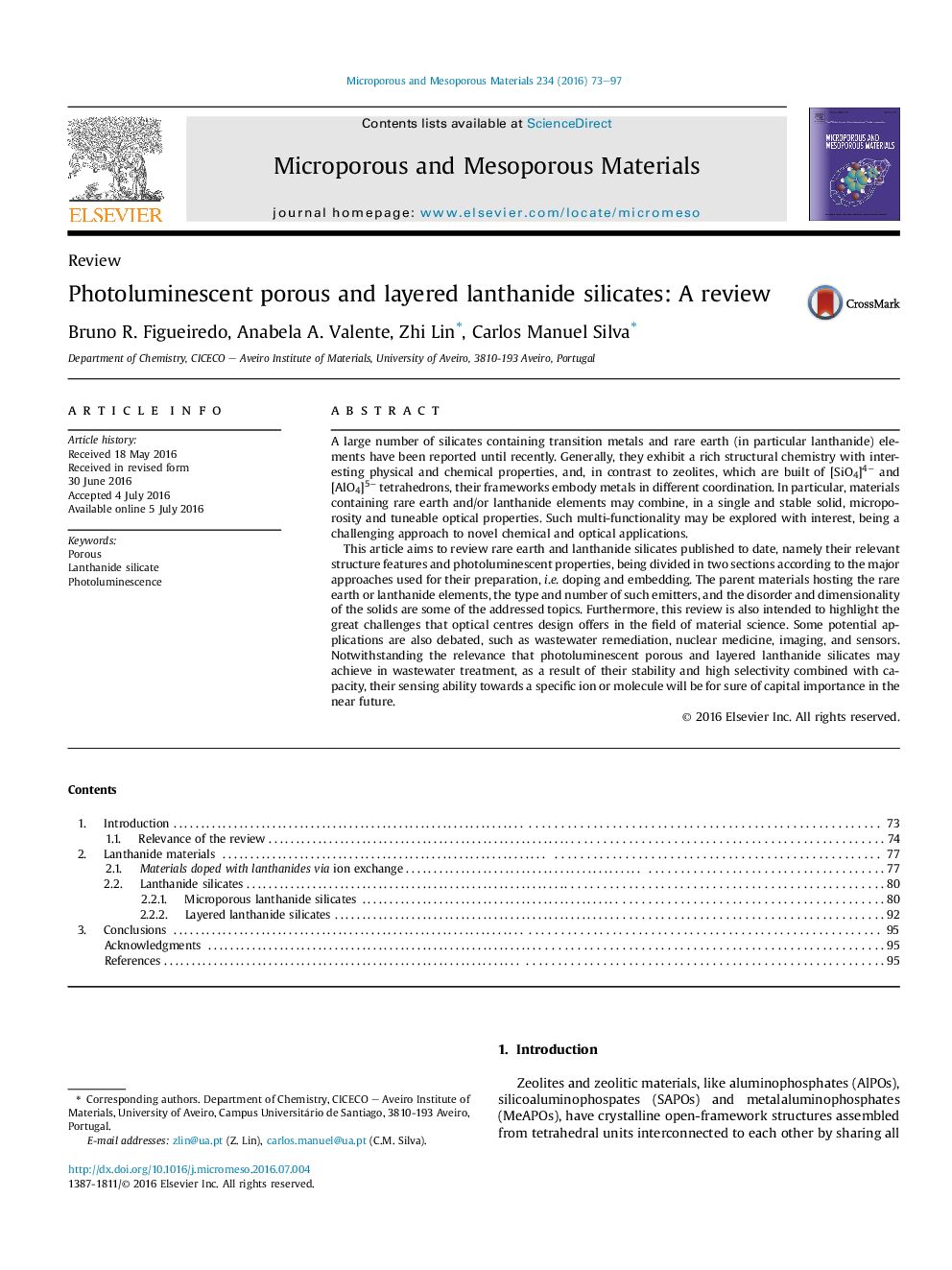| Article ID | Journal | Published Year | Pages | File Type |
|---|---|---|---|---|
| 71915 | Microporous and Mesoporous Materials | 2016 | 25 Pages |
•Rare-earth (RE) and/or lanthanide (Ln) silicates prepared by doping or embedding.•Microporous and layered RE/Ln-embedded-silicates with tuneable optical properties.•Evaluation of the RE/Ln-silicates’ emitter centres, disorder and dimensionality.•Wastewater remediation, imaging, and sensors as applications for the RE/Ln-silicates.
A large number of silicates containing transition metals and rare earth (in particular lanthanide) elements have been reported until recently. Generally, they exhibit a rich structural chemistry with interesting physical and chemical properties, and, in contrast to zeolites, which are built of [SiO4]4− and [AlO4]5− tetrahedrons, their frameworks embody metals in different coordination. In particular, materials containing rare earth and/or lanthanide elements may combine, in a single and stable solid, microporosity and tuneable optical properties. Such multi-functionality may be explored with interest, being a challenging approach to novel chemical and optical applications.This article aims to review rare earth and lanthanide silicates published to date, namely their relevant structure features and photoluminescent properties, being divided in two sections according to the major approaches used for their preparation, i.e. doping and embedding. The parent materials hosting the rare earth or lanthanide elements, the type and number of such emitters, and the disorder and dimensionality of the solids are some of the addressed topics. Furthermore, this review is also intended to highlight the great challenges that optical centres design offers in the field of material science. Some potential applications are also debated, such as wastewater remediation, nuclear medicine, imaging, and sensors. Notwithstanding the relevance that photoluminescent porous and layered lanthanide silicates may achieve in wastewater treatment, as a result of their stability and high selectivity combined with capacity, their sensing ability towards a specific ion or molecule will be for sure of capital importance in the near future.
Graphical abstractFigure optionsDownload full-size imageDownload as PowerPoint slide
